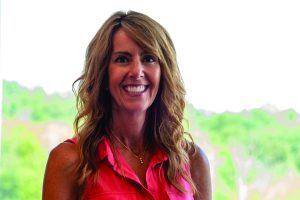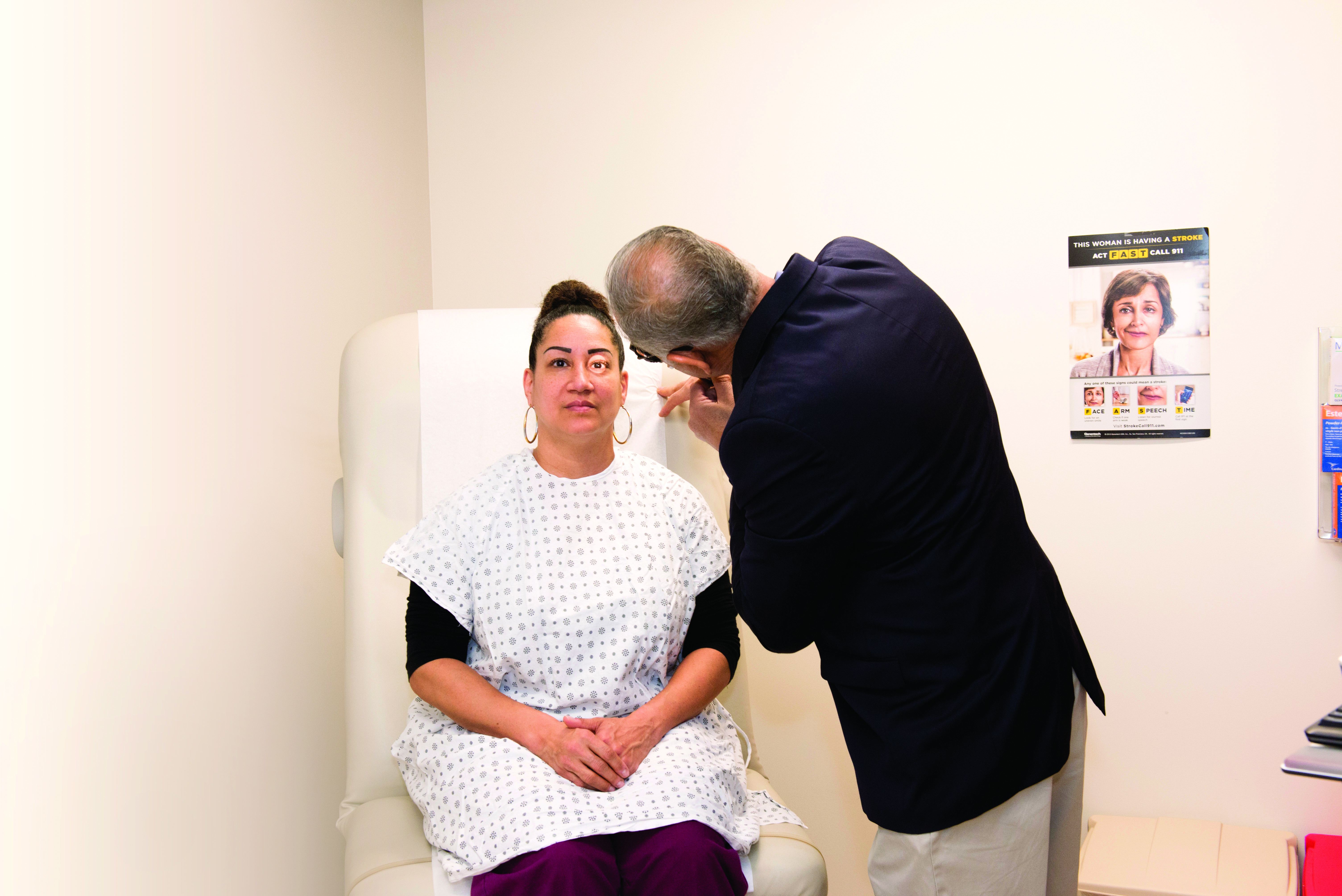This story originally appeared in UConn Health Journal.
Her grandmother died of a ruptured brain aneurysm, and Diana Fritzson was 38 when her mother died of the same cause at age 63. Fritzson refused to be the third link in that chain.
After discovering aneurysms do run in some families, Fritzson sought annual screenings, which came back clean. “Maybe I dodged this,” she thought.
But during her screening in 2014, a small balloon in one of her blood vessels appeared.
For another four years, Fritzson waited and watched under the care of her neurologist, her anxiety growing. She worried every time she suffered a migraine, but low likelihood of rupture and her overall good health meant the doctor wasn’t too concerned.
Fritzson, though, was scared. “I saw my mother die. I knew my grandmother died of this. What am I going to do, sit here and wait for it to rupture?” she remembers thinking.
Like Fritzson, about 6.5 million Americans have brain aneurysms, bulging weak spots in the wall of a brain artery that have a 1% chance of rupturing or leaking, sending blood into the brain and causing what’s called a hemorrhagic stroke. Aneurysms aren’t the only cause of brain bleeds; they can also result from cavernomas, arteriovenous malformations, hypertension, and head trauma.
Strokes are the fifth leading cause of death in the U.S., killing about 146,000 people each year, according to the American Stroke Association. There are two types, and 87% of strokes are the other kind — ischemic strokes, in which an artery is blocked by a clot.
UConn Health’s award-winning primary stroke center is well equipped to handle the most complex cases of either type. The 2017 addition of neurosurgery chief Dr. Ketan Bulsara elevated UConn Health’s ability to offer world-class care and become a tertiary referral center for the full spectrum of strokes, including the most complex requiring surgical or endovascular intervention.

But Bulsara doesn’t only want to save those facing a life-threatening emergency.
Through early detection and expert treatment, he wants to prevent the potentially catastrophic results of a stroke.
He wants to help people like Diana Fritzson.
‘I can do this for you’
While her care team continued to advise watchful waiting due to the perceived risk of treatment, Fritzson got less and less comfortable living with the threat of aneurysm rupture. About half the time, a ruptured brain aneurysm is fatal. Roughly two-thirds of those who survive suffer permanent brain damage, according to the Brain Aneurysm Foundation.
“The risk of bleeding is low, but when they do bleed, the results are devastating,” says Bulsara, who came to UConn Health after building successful neurovascular and skull base surgery programs at Yale University. Bulsara is among a select group of neurosurgeons in the world who is dual-fellowship trained in skull base/cerebrovascular microsurgery and endovascular neurosurgery.
“If a patient has an incidentally detected brain aneurysm, it’s reasonable to be evaluated for it because it may be something that’s readily amenable to treatment,” he says.
The worry weighed on Fritzson and her family, and the normally active 53-year-old and her husband would cut short activities when they got nervous something was too much for her. Her migraines worsened, and she feared that despite having the knowledge her mother and grandmother didn’t have, she would suffer the consequences, too.
And then a friend of a friend told her about Bulsara, who had performed surgical clipping to treat her aneurysm. Fritzson’s specialist was retiring, so she made an appointment.
“From the second I walked in, everyone was so helpful and kind,” says Fritzson, who lives in Marlborough, Connecticut. “I sat down and Dr. Bulsara talked to me like a human being. He validated my concerns, and within 10 minutes he understood my constant anxiety and that my quality of life was affected by what I was going through.
“By the second visit, he said, ‘Diana, I can go in and clip this aneurysm. I’m confident that I can do this for you safely.’”
She decided to go ahead with the surgery.
The neurosurgery team coordinated all her care, and Bulsara was her personal point of contact.
Freedom
Brain aneurysms can be treated in two primary ways: through microsurgery — placing a titanium clip across the neck of the aneurysm, as in Fritzson’s case — or endovascular surgery, which entails putting coils into the aneurysm.
UConn Health, with its state-of-the-art, biplane hybrid operating room that allows for a range of surgical procedures, can offer the full range of treatment options like few other medical centers, Bulsara says.
Though the microsurgical clipping procedure involves a craniotomy, for Fritzon’s aneurysm, it was a sure bet and had a low risk profile. And she was in skilled hands — Bulsara was trained by neurosurgery pioneers who developed many of the procedures used today.
“Just imagine the comfort of knowing that your brain aneurysm is taken care of, that you don’t have to worry about every headache that you have,” Bulsara says. “For Diana, every headache would no longer cause fear that what happened to your mother and grandmother could happen to you.”
With more awareness and research available and easier access to surveillance imaging, lesions such as aneurysms that can be treated before problems arise are being detected in more and more patients. The advanced neurosurgical care offered by UConn Health’s multidisciplinary team is shaping the future of treatment for these potentially catastrophic lesions, Bulsara says.
Fritzson, for one, hasn’t regretted her decision for a second.
Since her surgery in August 2018, she has dedicated much of her time to advocating for others, raising money for the Brain Aneurysm Foundation through an annual 5k in West Hartford that she started and founding the state’s first brain aneurysm support group in partnership with the Brain Aneurysm Foundation and UConn Health. She also represented Connecticut as the state ambassador for the Brain Aneurysm Foundation.
After the surgery, “It almost felt like a sense of freedom. I feel like I have a second lease on life and I have to do something with it, even if I help one person,” she says.
To others living with aneurysms, she says, “Call UConn Health. I had no previous affiliation with this hospital, and I can’t speak highly enough of my experience.”



